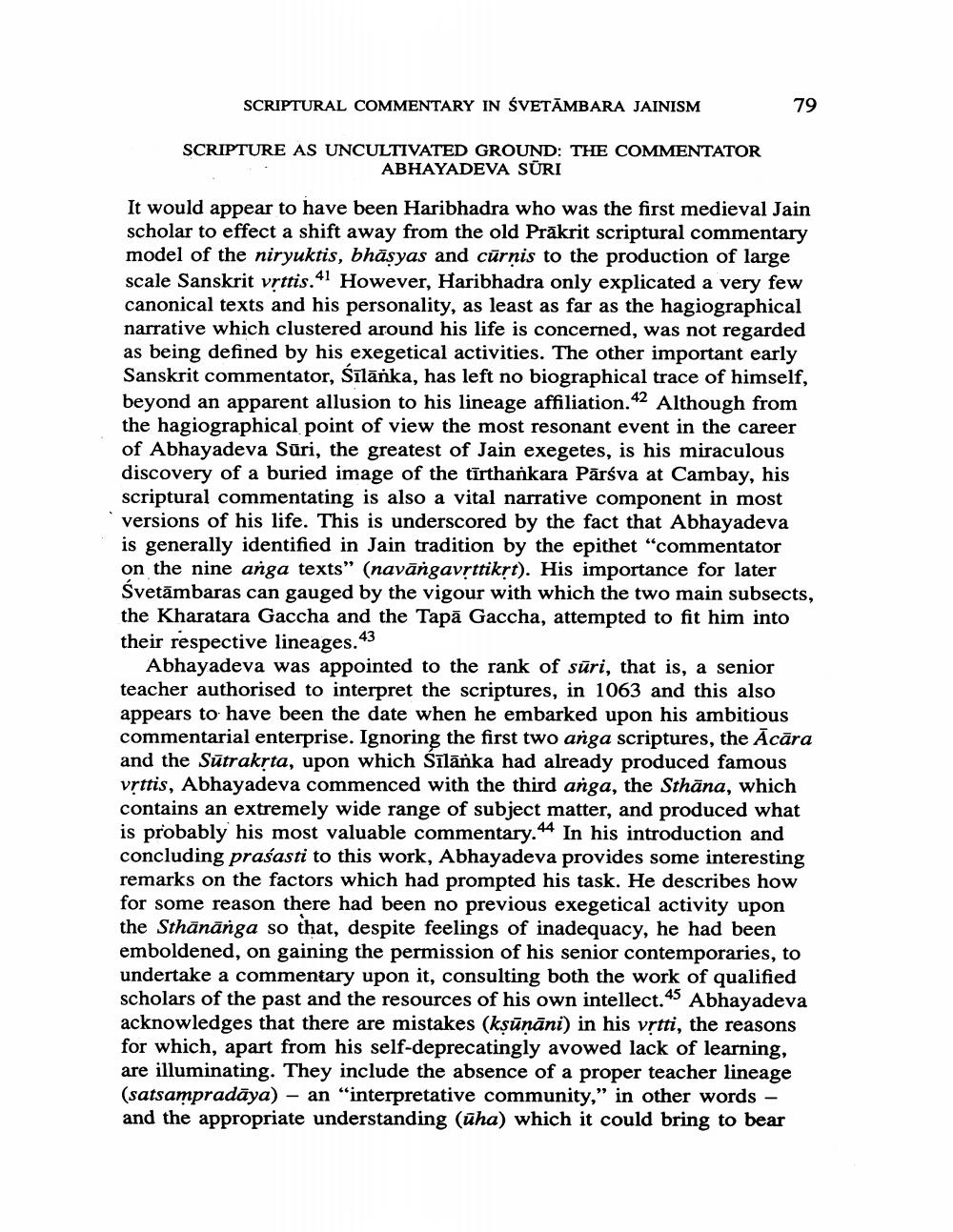Book Title: Somnolent Stras Sriptural Cmmentary In Svetambara Jainism Author(s): Paul Dundas Publisher: Paul Dundas View full book textPage 7
________________ SCRIPTURAL COMMENTARY IN ŚVETĀMBARA JAINISM 79 SCRIPTURE AS UNCULTIVATED GROUND: THE COMMENTATOR ABHAYADEVA SŪRI It would appear to have been Haribhadra who was the first medieval Jain scholar to effect a shift away from the old Prākrit scriptural commentary model of the niryuktis, bhāsyas and cūrņis to the production of large scale Sanskrit vrttis.41 However, Haribhadra only explicated a very few canonical texts and his personality, as least as far as the hagiographical narrative which clustered around his life is concerned, was not regarded as being defined by his exegetical activities. The other important early Sanskrit commentator, śīlānka, has left no biographical trace of himself, beyond an apparent allusion to his lineage affiliation.42 Although from the hagiographical point of view the most resonant event in the career of Abhayadeva Süri, the greatest of Jain exegetes, is his miraculous discovery of a buried image of the tīrthankara Pārśva at Cambay, his scriptural commentating is also a vital narrative component in most versions of his life. This is underscored by the fact that Abhayadeva is generally identified in Jain tradition by the epithet "commentator on the nine anga texts” (navāngavrttikst). His importance for later Svetāmbaras can gauged by the vigour with which the two main subsects, the Kharatara Gaccha and the Tapā Gaccha, attempted to fit him into their respective lineages.43 Abhayadeva was appointed to the rank of sūri, that is, a senior teacher authorised to interpret the scriptures, in 1063 and this also appears to have been the date when he embarked upon his ambitious commentarial enterprise. Ignoring the first two anga scriptures, the Ācāra and the Sūtraksta, upon which Šīlānka had already produced famous vrttis, Abhayadeva commenced with the third anga, the Sthāna, which contains an extremely wide range of subject matter, and produced what is probably his most valuable commentary.44 In his introduction and concluding prasasti to this work, Abhayadeva provides some interesting remarks on the factors which had prompted his task. He describes how for some reason there had been no previous exegetical activity upon the Sthānānga so that, despite feelings of inadequacy, he had been emboldened, on gaining the permission of his senior contemporaries, to undertake a commentary upon it, consulting both the work of qualified scholars of the past and the resources of his own intellect.45 Abhayadeva acknowledges that there are mistakes (kşūnāni) in his vrtti, the reasons for which, apart from his self-deprecatingly avowed lack of learning, are illuminating. They include the absence of a proper teacher lineage (satsampradāya) - an "interpretative community," in other words - and the appropriate understanding (üha) which it could bring to bearPage Navigation
1 ... 5 6 7 8 9 10 11 12 13 14 15 16 17 18 19 20 21 22 23 24 25 26 27 28 29
